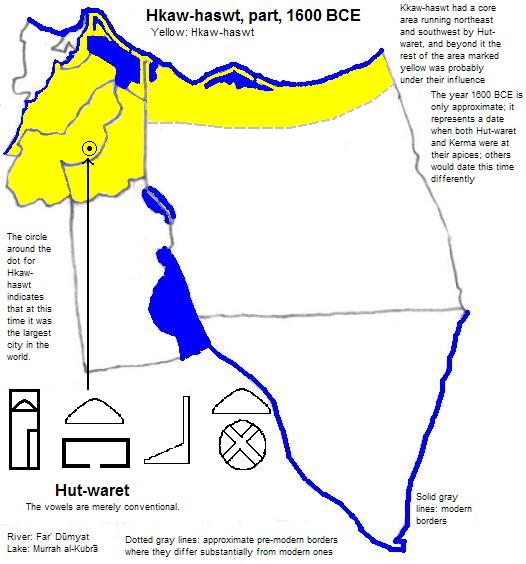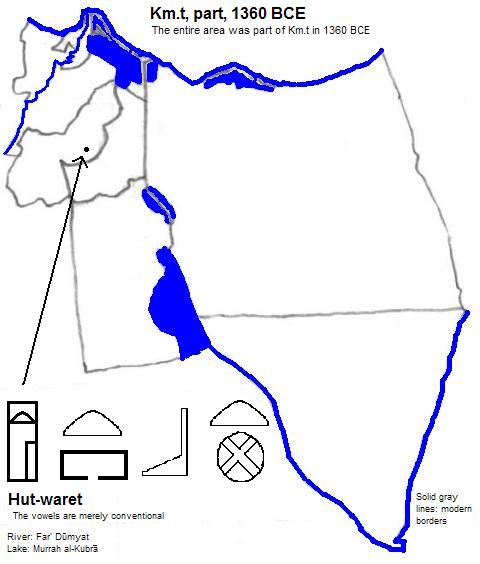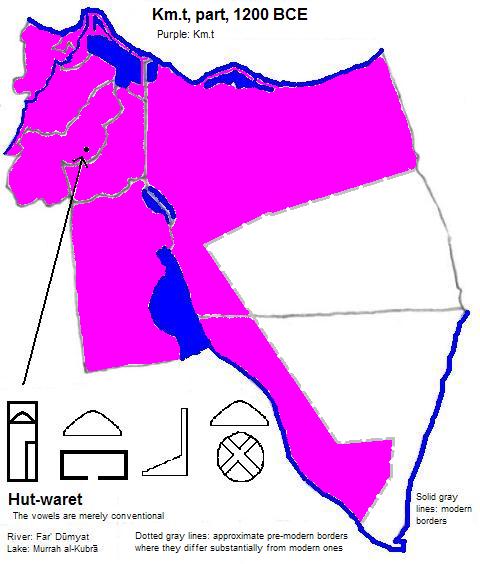Ḥw.t wr.t (Hut-waret)
Ḥw.t wr.t (Hut-waret)1 was located north of Markaz Faqus in ash-Sharqīyah (the East) nome in the northeastern delta of مصر (Miṣr or Egypt). It was the capital of ḥʒḳw-ḫḳswt (Hyksos state) in the Second Intermediate Period, but was largely destroyed in the 16th century BCE, only to revive as Piramesse, an important New Kingdom city, which continued until the beginning of the first millenium BCE. Its stones were taken to build Djanet (Tanis) after its branch of the Nile silted up in 1060 BCE. The most famous materials found in the ruins by modern archeologists were riezes that in subject, style and technique were indistinguishable from Minoan ones.2
| Year | Population | Political entity |
| 1600 BCE3 | 100,0004| ḥʒḳw-ḫḳswt (Hyksos state or land of the Rulers of Foreign Countries) | |
External references
ruins of Hut-waret (Avaris)
Historical maps



Footnotes
1. The vowels are conventional among Egyptologists but are not intended to represent the vowel sounds of the times.
2. Manfred Bietak, 'Tell ed-Dab'a', in Donald B. Redford, ed., The Oxford Encyclopedia of Ancient Egypt, Vol. I (Oxford Unversity Press, 2001).
3. 1600 BCE is just approximate. It represents a time in the Second Intermediate Period when Hut-waret and Kerma were at their apices. Others would set a different date.
4. Tertius Chandler, Four Thousand Years of Urban Growth, 2nd ed. (The Edwin Mellen Press, 1987), "Tables of World's Largest Cities: 1600 B.C." Chandler says it was the largest city in the world at that time.



